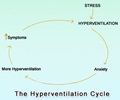Physicians at Thomas Jefferson University Hospital in Philadelphia report on a seemingly healthy 55-year-old man who had a silent heart attack and subsequent unexplained chest pain
In a case study to be published in the January issue of the international journal Clinical Cardiology, physicians at Thomas Jefferson University Hospital in Philadelphia report on a seemingly healthy 55-year-old man who had a silent heart attack and subsequent unexplained chest pain. Unexplained chest pain after a heart attack might be more dangerous than many physicians originally think.
Once he was admitted to the hospital, it was discovered that the man actually had a rarely diagnosed complication called subepicardial aneurysm, which, if not quickly treated, could be fatal."The chest pain was a rupture of the heart wall about to happen--the most feared complication of a heart attack," explains Michael Savage, M.D., director, Cardiac Catheterization Laboratory at Thomas Jefferson University Hospital. "The rupture occurs from a tear in the muscle that has already been damaged by a heart attack. The heart muscle breaks and the wall bursts usually causing cataclysmic death soon after."
The Jefferson researchers recommend that when a patient experience unexplained pain after a heart attack, physicians should consider the possibility of a subepicardial aneurysm.
Diagnosis of a subepicardial aneurysm is extremely rare, says Dr. Savage, who is also associate professor of Medicine, Jefferson Medical College of Thomas Jefferson University. Only 20 cases have ever been reported in the medical literature and many patients were diagnosed after death. It is highly likely that many more patients have died from this complication but the cause of death was unrecognized.
According to lead researcher, Aaron Giltner, M.D., a cardiology fellow at Thomas Jefferson University Hospital, the man, who worked in construction, came to the Thomas Jefferson University Hospital emergency room with chest pain. A heart attack was initially considered and the emergency physicians called in the interventional cardiologists for a consult.
The cardiologists also initially suspected a heart attack. The patient was admitted to the hospital and was readied for a cardiac catheterization to check for blocked arteries.
Advertisement
"As our study shows," Dr. Savage says, "CT imaging can be invaluable in establishing the diagnosis of a subepicardial aneurysm. Clinical recognition of this entity and the use of appropriate imaging modalities are imperative to facilitate life-saving surgical intervention."
Advertisement
SRI











